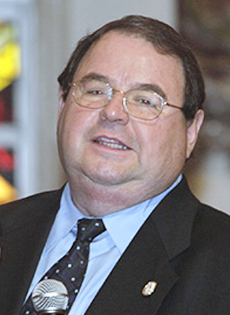
Father Brochero
Monday, January 23, 2017
*Rogelio Zelada
Father José Gabriel del Rosario Brochero has just taken possession of San Alberto parish, an extensive mission area of 4,336 square kilometers located in the Traslasierra Valley, in Argentina. His parishioners are scattered and isolated, distant and dispersed among small villages nestled in the Sierras Grandes, separated by valleys, gorges and huge mountains at over 2,000 meters high. It was a pastoral challenge for this young priest who had been ordained three years before, on Nov. 4, 1866. The sheep he must shepherd are unfortunately far removed from Christian life and morality, immersed in great poverty and indigence, with no roads, no bridges, no schools, no spiritual attention.
Father Brochero’s spiritual clarity makes him understand from the outset that his evangelizing work must be achieved by promoting the social and educational welfare of the more than 10,000 inhabitants from those mountainous zones. He intuits that it must begin with the spiritual reconstruction of the faithful, and the following year he organizes rounds of Spiritual Exercises in the city of Córdoba. This entails a journey of more than 200 kilometers, and having to cross the mountains on mule back with groups of more than 500 people, men and women.
The inclement weather and the awful snowfalls force them to delay the journey many times, but never interrupt it, because those nine days of meditation, prayer and silence of the Spiritual Exercises were transforming the rude peasants and also their attitude towards life. With the support of the local people, five years later he begins to build a large retreat house in the Villa del Tránsito, with rounds and rounds of retreats attended by multitudes. During the time of Father Brochero’s ministry, more than 70,000 people made the Spiritual Exercises of St. Ignatius of Loyola there.
Mounted on his mule "Malacara," (badface) Father Brochero travels paths and crosses the complex geography of the area to help his people. He is a pastor who celebrates the Eucharist, baptizes, administers the sacrament of forgiveness, accompanies them at their moment of death, visits the sick, blesses marriages and never neglects those important aspects of his priestly mission. He also relies on the collaboration of neighbors to build roads that allow communication between villages, and an aqueduct to bring water for all. He establishes schools, gets the government to give them a post office and a telegraph, and more.
Father Brochero preaches by example; he becomes a laborer, a carpenter, whatever it takes. When the time comes to open roads or build bridges or ditches, he becomes one of the workers. He builds churches and chapels. He understands the need to promote women and establishes a Women’s College in 1880, for which he brings from Córdoba, and on horseback, 15 religious women, the Sisters, Slaves of the Heart of Jesus.
Father Brochero speaks in the rough language of the gauchos, for all to understand. Brave, austere and determined, he does not hesitate to cross a raging river to care for a dying man, or to go up the mountain to persuade a fearsome outlaw and bring him, with the rest of the thieves, to a session of Spiritual Exercises from which they emerge transformed and converted. Every effort is important to get his faithful out of poverty and marginalization. He knows very well that the inhabitants of these hills "have been abandoned by all, but not by God" and so he struggles, with all the energy of the Gospel, to alleviate that misery and transform it by creating conditions for a dignified life.
From caring for and being close to the sick and the lepers, with whom he used to share the "mate," he contracted Hansen's disease, which left him deaf and almost blind. That is why he resigned from the pastorship of the Tránsito and returned to Córdoba to live with his sisters. However, at the request of his former parishioners, he returned to his home in the parish of Villa del Tránsito, where he died on Jan. 26, 1914. Father Brochero, the "gaucho priest," was born March 16, 1840 in the town of Santa Rosa, the fourth son of a family of 10 brothers. Two of his sisters were religious.
A few years after his death, after consultation with the people, the provincial government of Córdoba changed the name of Villa del Tránsito to Villa Cura Brochero (Villa Father Brochero). In 2004, Pope John Paul II declared Father Brochero "Venerable." On that occasion, the Holy Father said, "Father Brochero would be the Curé d’Ars of Argentina." Benedict XVI signed the beatification decree, and Cardinal Angelo Amato presided at the ceremony in the small Villa Cura Brochero in 2013, during the pontificate of Pope Francis. This pope, Argentinian like Father Brochero, solemnly canonized him in St. Peter's Square Oct. 16, 2016.
Father Brochero was a man of silence and profound prayer, a model of a parish priest because of his dedication, courage and closeness, not only to the spiritual needs of his people, but also to everything the Gospel told him to do for his brothers and sisters. He always knew whom to trust and whom to go to, certain that "the grace of God is like the rain: it covers everyone."


Comments from readers